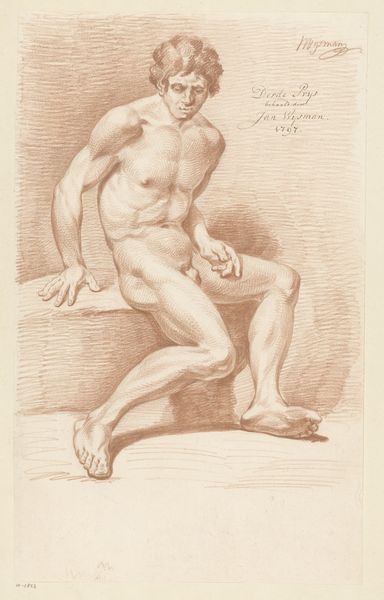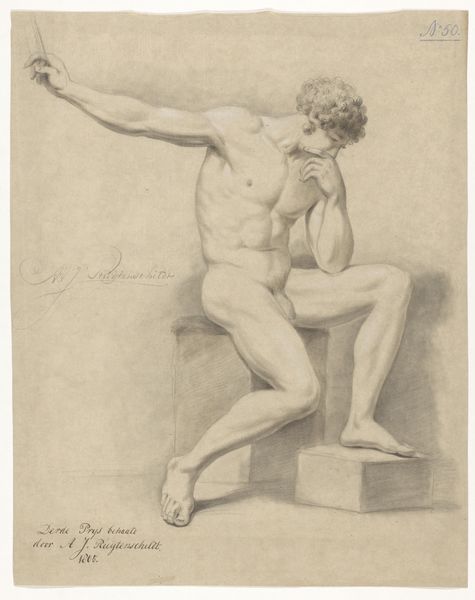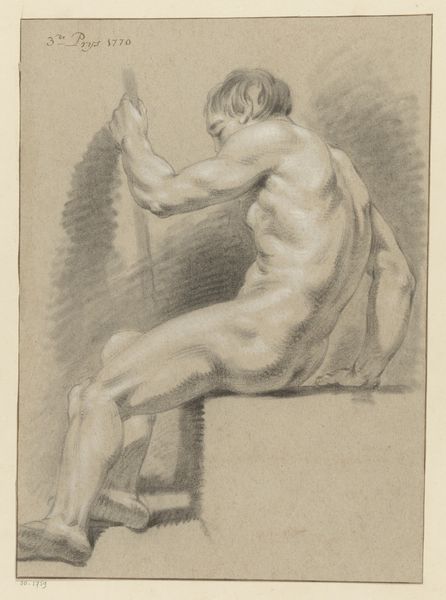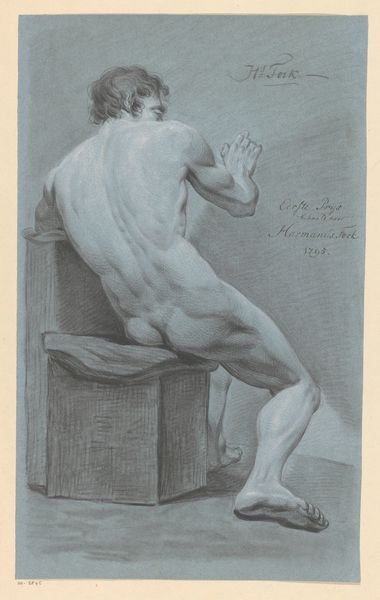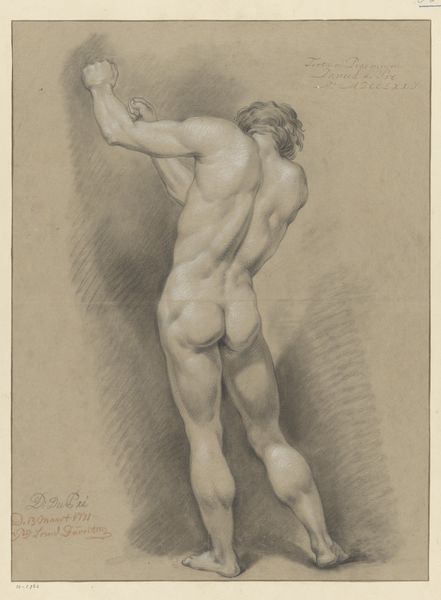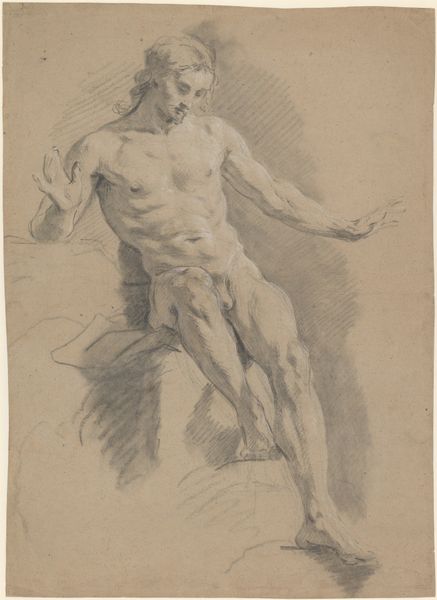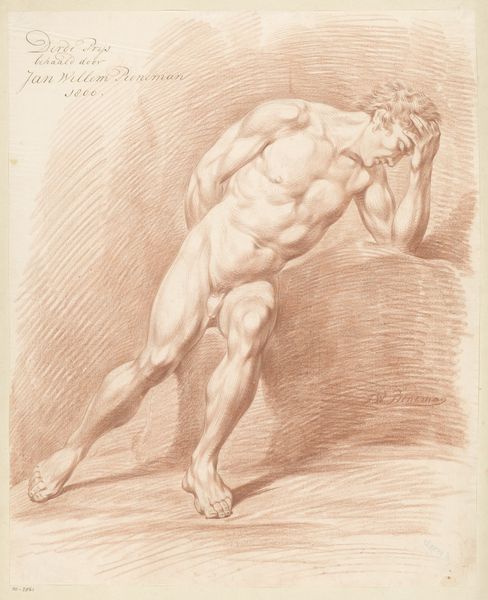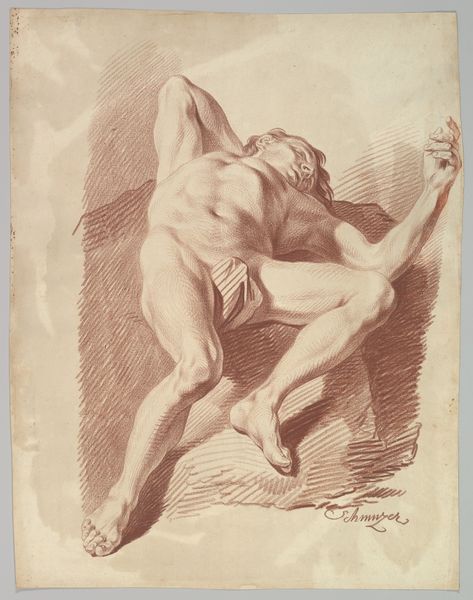
drawing, charcoal
#
portrait
#
drawing
#
neoclacissism
#
charcoal drawing
#
pencil drawing
#
charcoal
#
academic-art
#
nude
#
portrait art
Dimensions: height 582 mm, width 431 mm
Copyright: Rijks Museum: Open Domain
Curator: Christiaan Andriessen's "Zittend mannelijk naakt, van voren gezien" or "Seated Male Nude, Seen from the Front," thought to be from 1799, offers a fascinating glimpse into artistic training of the era. Editor: It's melancholic, almost defeated. The figure's slumped posture contrasts strangely with the highly rendered musculature and carefully lit form. It feels less about celebrating the body and more about... resignation? Curator: Precisely. This was not necessarily intended as a work of art for public display, but rather a study. It even says, in a note on the drawing, that it won second prize in 1799, likely for an academy competition. These were rigorous exercises in mastering anatomy and form, cornerstones of Neoclassical art education. Editor: So, less about creative expression and more about skill acquisition? It is quite something to look at this work in charcoal – all the precise blending involved. Was the application and distribution of the materials also judged? Curator: Absolutely. The drawing’s materiality, from the quality of the charcoal to the paper it’s on, would be considered. Academies instilled values of precision and control. Look at the rendering of the shadows, building depth with layered strokes, not simply smudging the charcoal. Technique was everything, conforming to institutional expectations. Editor: Which also says a lot about power dynamics. Who got to decide what constituted “good” art? The academies effectively controlled taste and career prospects for artists. Is this submission to traditional artistic practices what they expected of the artists at that time? Curator: Exactly. It speaks to how artistic standards were set, and how young artists had to demonstrate mastery within very specific parameters. It was a system designed to perpetuate a certain aesthetic, linked directly to broader social and political ideals of order and rationality. This work reveals art’s function within institutional power structures. Editor: So, what we're seeing isn’t just a nude, but also evidence of art as labor, a manufactured exercise designed to teach particular artistic outcomes, revealing much more about its historical and social situation than simply what is rendered on its surface. Curator: A fitting observation—I couldn't agree more. This piece really helps to unveil what constituted art and value at that time, highlighting the deep interrelation between the social values and artistic practices that are often presented as neutral or universal.
Comments
No comments
Be the first to comment and join the conversation on the ultimate creative platform.
